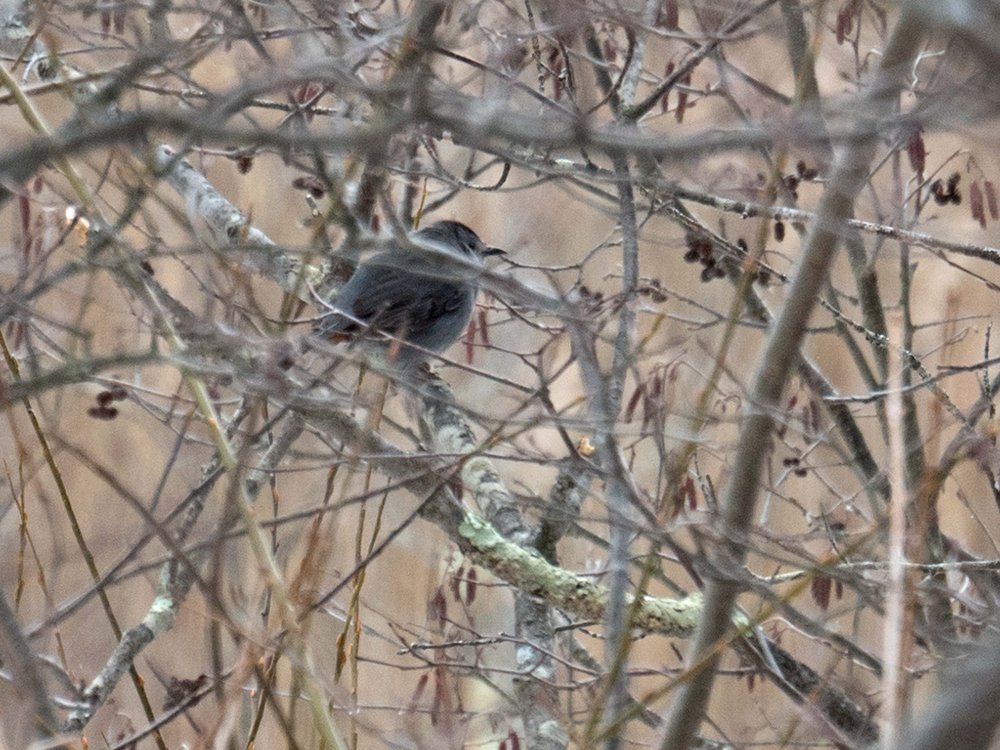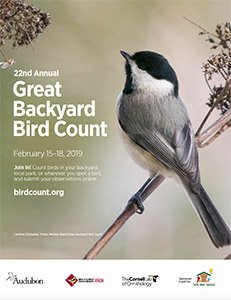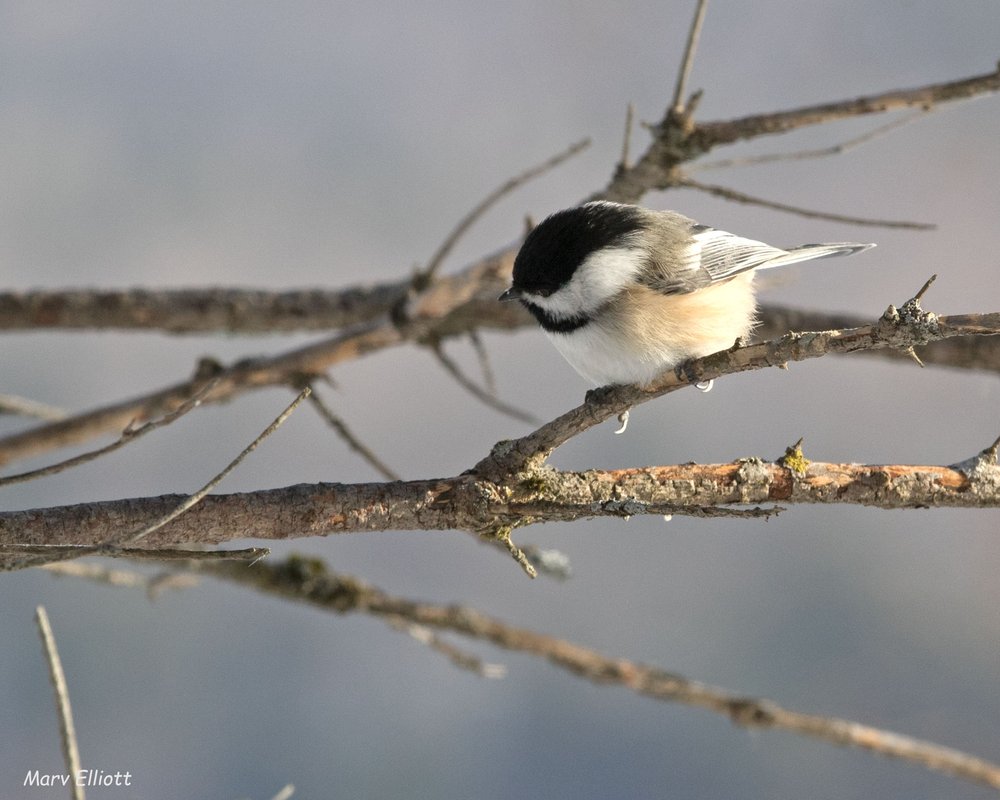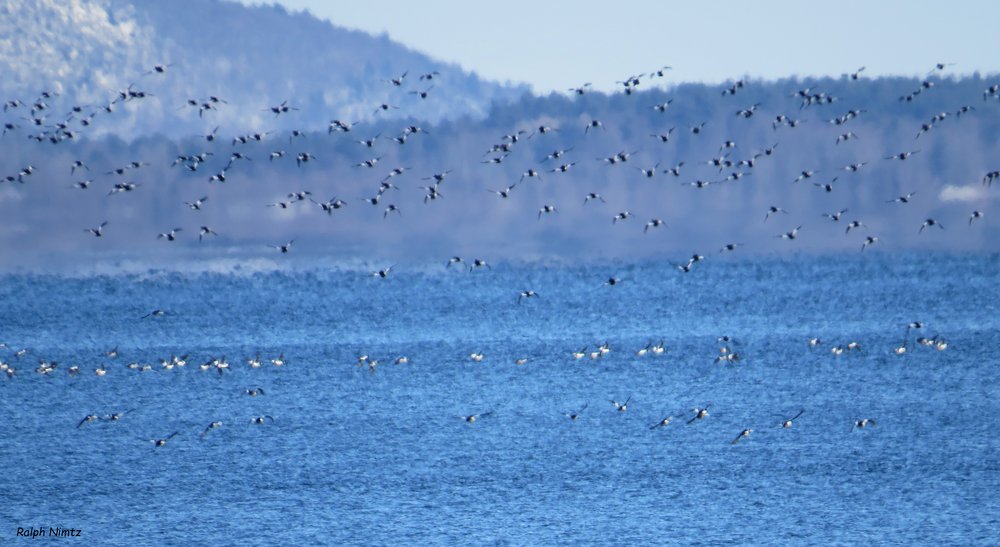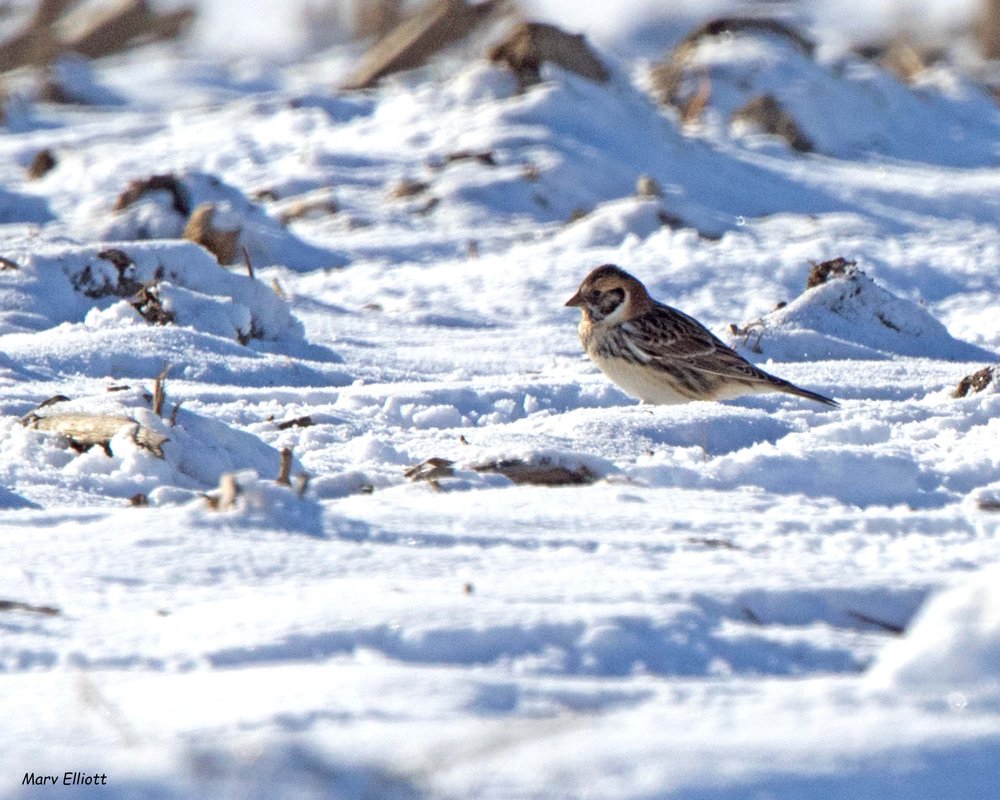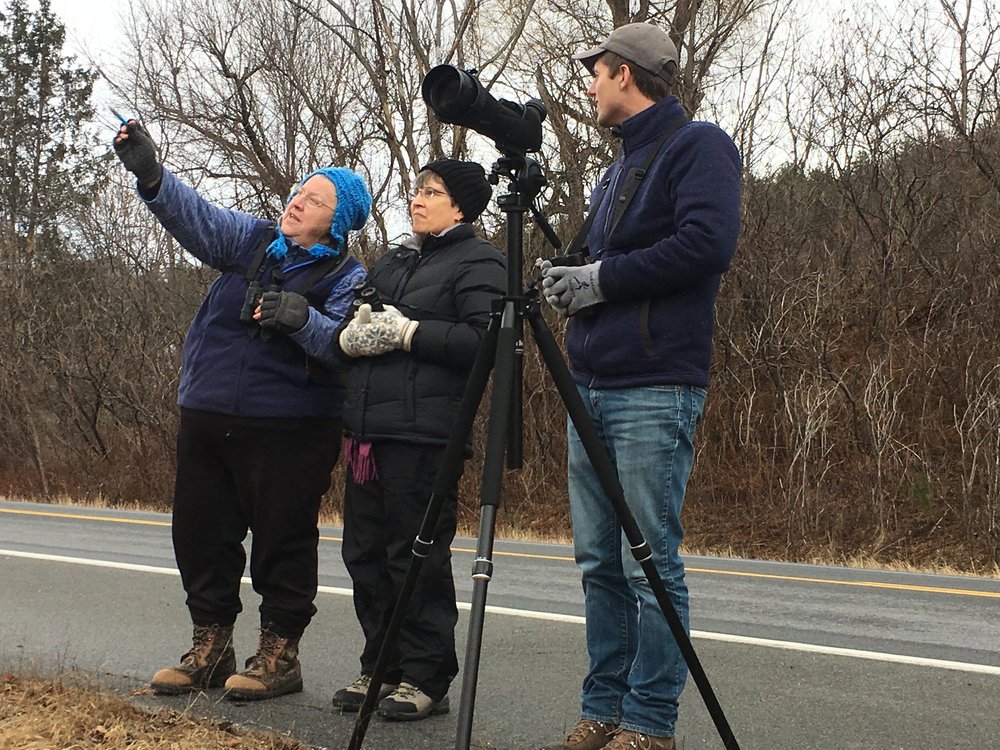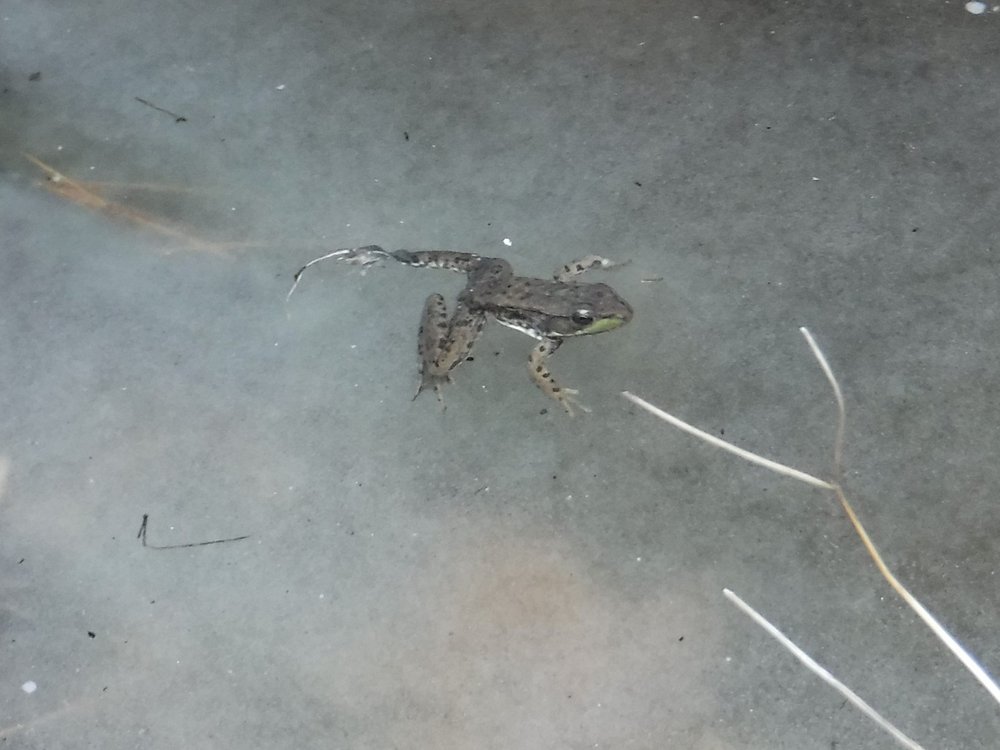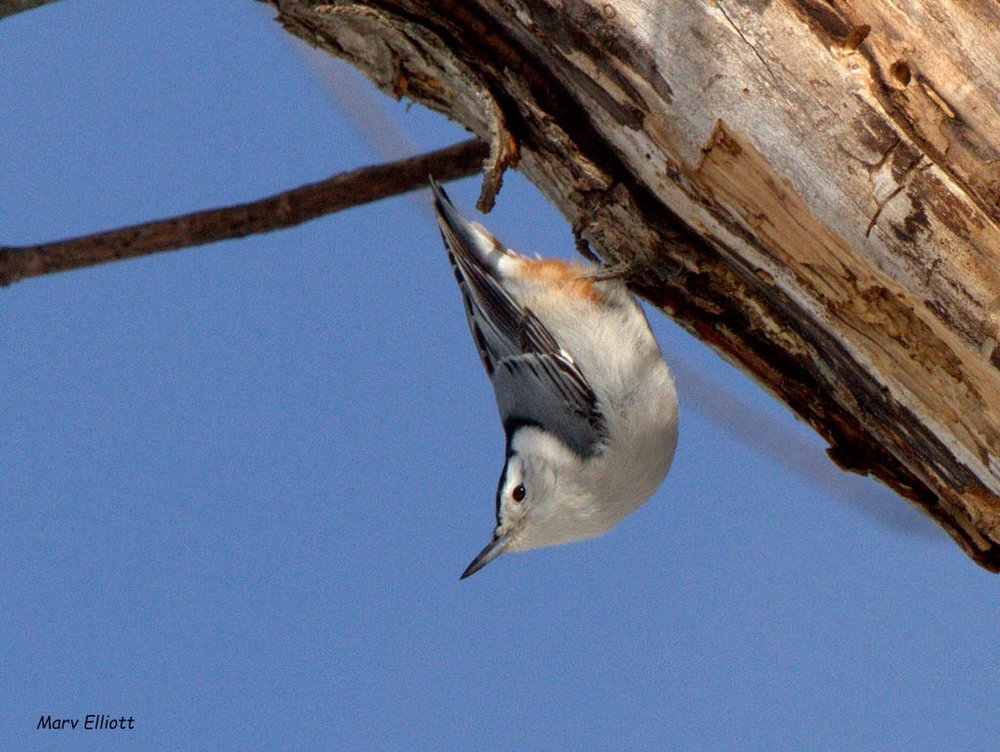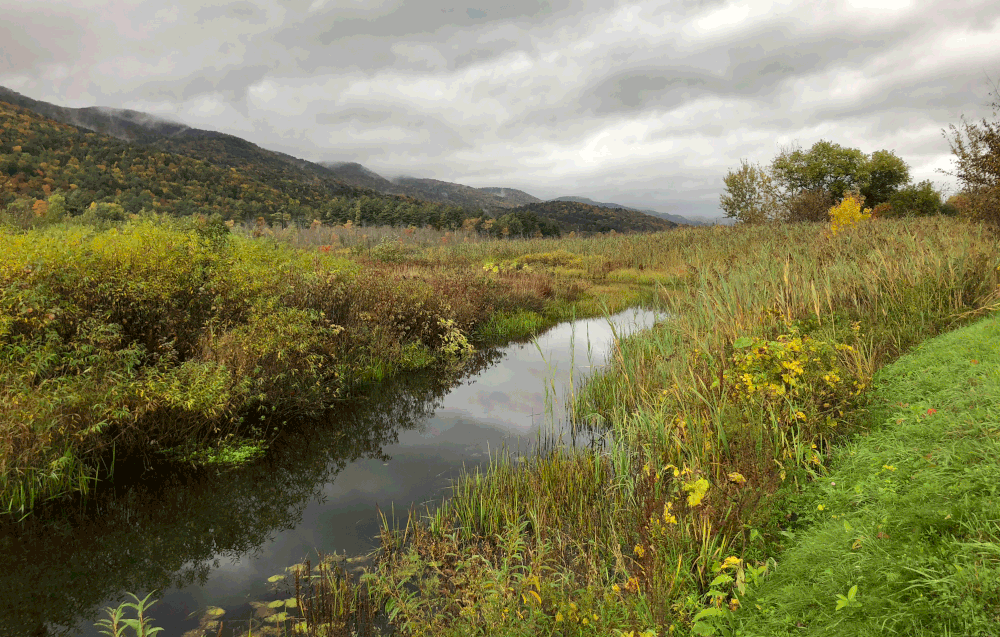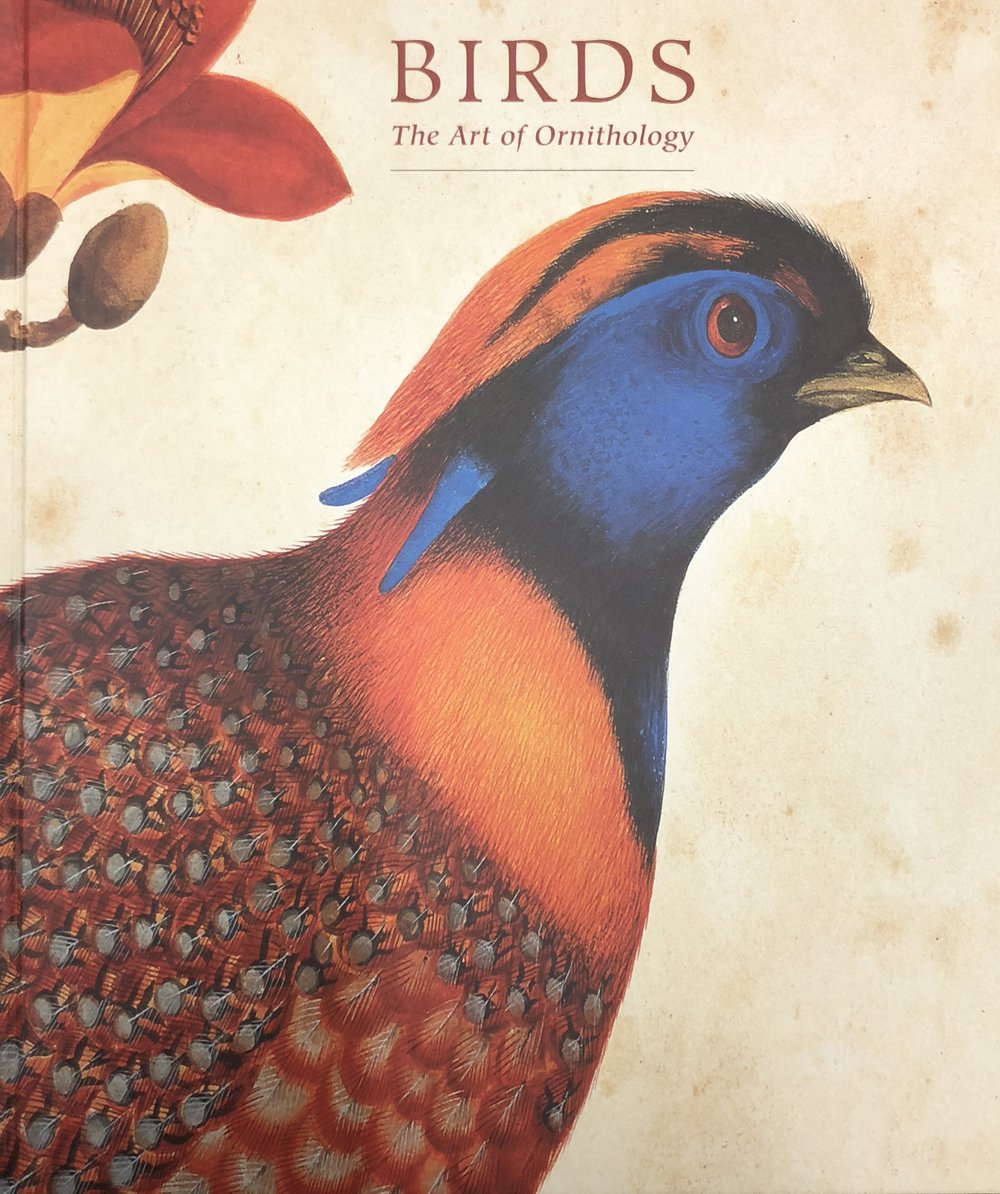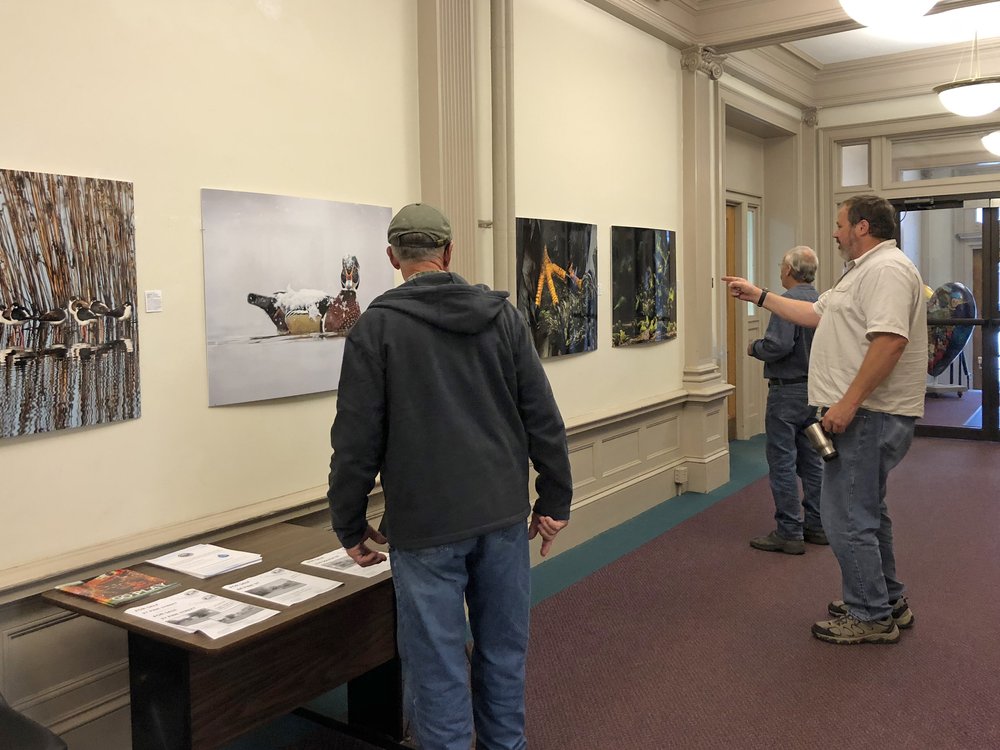 On July 11, Rutland County Audubon held its annual meeting for our fiscal year ending on June 30, 2018 at the Proctor Library. Following a delicious potluck supper, the business meeting began with the treasurer's report by Russell Kulas.
On July 11, Rutland County Audubon held its annual meeting for our fiscal year ending on June 30, 2018 at the Proctor Library. Following a delicious potluck supper, the business meeting began with the treasurer's report by Russell Kulas.
After the report was approved and accepted, Marv Elliott, chairman of the Nominating Committee, presented the slate of officers for the coming year. Two changes to our current officers will be Thana McGary as Secretary and Marv Elliott as Treasurer, replacing Kathleen Guinness and Roy Pilcher, respectively. The board thanks Kathleen and Roy for their service in these positions.
The business portion of the evening was followed by a presentation of pictures and sound recordings by RCAS members.
President Nate Dansereau presented the following annual report:
Rutland County Audubon had another good year.
We completed a year of monthly walks at West Rutland Marsh with some record-setting days for the number of participants and the some great birds were in attendance also.
It was another good year for the Christmas Bird Count and the Winter Regulars and Rarities trip to the Champlain Valley.
Members participated in Vermont Green-up Day at West Rutland Marsh in May to help stay ahead of the constant dumping there.
We had some vandalism of the boardwalk this spring and have made efforts to more securely hold down the board walk decking.
Our annual Century Count was a success, coming up just shy of the goal, but it was a great day of birding together.
In June we had what has become an annual event: West Rutland Marsh Education Day. It was another success with a group of members acting as guides to Proctor Elementary School 5th graders at various natural science stations
Over the colder months we had our monthly programs this year at Grace Congregational Church due to some issues at the Fox Room at Rutland Free Library. Successful programs ran from the Grand Tetons to butterflies.
Vermont State Fair: RCAS continued our annual display at last year’s fair
I attended the semi-annual chapter assembly this past winter where we said good-bye to long time Vermont Audubon Director Jim Shallow. Jim is now with the Nature Conservancy. Audubon Vermont is searching for a new director. We look forward to welcoming a new director at a board meeting.
All Audubon chapters have similar issues with limited active and aging membership. We are always looking for ideas of how we can make this a vibrant, growing chapter. Any ideas for activities and how we can recruit new members are always appreciated.
In addition to this report is our annual financial report. In summary, our financial state is fine as we have little in the way of expenditures. Income and membership is down.
Upcoming activities:
Our website is the best place to check for activities.
Upcoming walk this Saturday, July 14, at West Rutland Marsh
Trip to the Birds of Vermont Museum in Huntington on July 21
Bird walk at the Split Rock Trail in Pittsford on August 11
Details from the Board of Directors:
Rutland County Audubon website:
- We publish our West Rutland Marsh walk reports on a monthly basis.
- We also publish trip reports such Winter Regulars and Rarities and our annual Century Count as well as the Christmas Bird Count results.
- We're always looking for new articles!
Rutland County Audubon Flickr:
- We currently have 800 photos.
- Each photo is receiving about 150 views.
Rutland County Audubon Facebook:
- Currently have 400 likes.
- Updated frequently to advertise upcoming events and articles of interest from National Audubon.
Events:
Rutland County Christmas Bird Count:
- Our 43rd count
- 52 species, over 7000 individual birds counted
West Rutland Marsh:
- We average 16 participants per walk.
- This month's walk marks our 17th year of consecutive monthly monitoring, one of the first ongoing bird monitoring walks in the state.
- Continue to add new species. Golden-winged Warbler was the latest addition.
Audubon VT/VELCO Surveys:
- Ongoing effort led by Audubon Vermont to tally the number of Golden-winged Warblers along VELCO power lines along with other target species.
- Several members participated (Sue Eliott, Marv Elliott, Sue Wetmore, Kathleen Guinness, Marsha Booker and others)
Mountain Top Farm was sold to a new owner this spring. We are awaiting a meeting with the new owner and hope to continue monitoring our easement. This is an ongoing issue that we hope to resolve.
Publicity Report
Increased publicity this year has resulted in increased attendance at our events and an increase in the public’s awareness of birds, birding, our natural environment and related issues.
Events for which publicity was provided, in local calendars of events and/or fliers:
Publications and media which provided us with free publicity for these events:
- The Rutland Herald
- Sam’s Good News
- The Rutland Reader
- The Mountain Times
- The Brandon Reporter
- The Manchester News Guide
- Vermont Woodlands
- Vermont News Guide
- The Lakeside News
- PEG TV
- WCAX TV
Publication of monthly marsh walk articles from our Birding Journal in three local papers: Sam’s Good News, The Manchester News Team papers, and Vermont Ski News. Thanks to Sue Elliott and Sue Wetmore for providing these.
In addition, Facebook posts by Sue Elliott, website calendars of events on RCAS’ site, and posts in the Rutland Herald Invite and Rutland Chamber of Commerce website calendars kept the e-readers informed of our activities. And a great article by Sue Wetmore appeared in the Rutland magazine.
The manning of booths by RCAS members Kathleen Guinness, DJ Hammond, and Irene Goebel at the Poultney Earth Day event and the June 2nd Rutland Farmers’ Market plus the carrying of our RCAS banner in the Rutland Loyalty Day Parade by Kathleen and Irene rounded out our chapter’s publicity for the year.
Suggestions for other ways and avenues in which to publicize our presence are always welcome.
Respectfully Submitted,
Nathan Dansereau
President Rutland County Audubon


